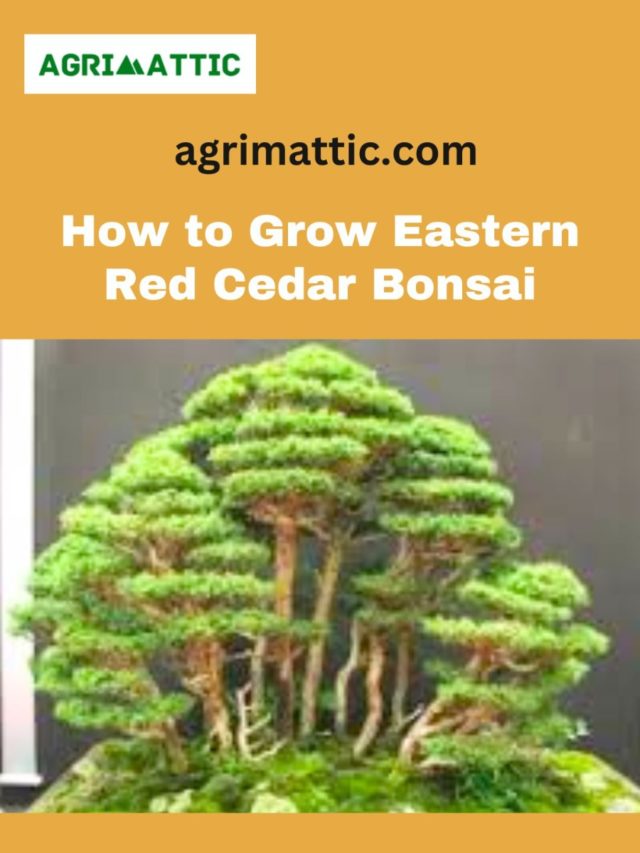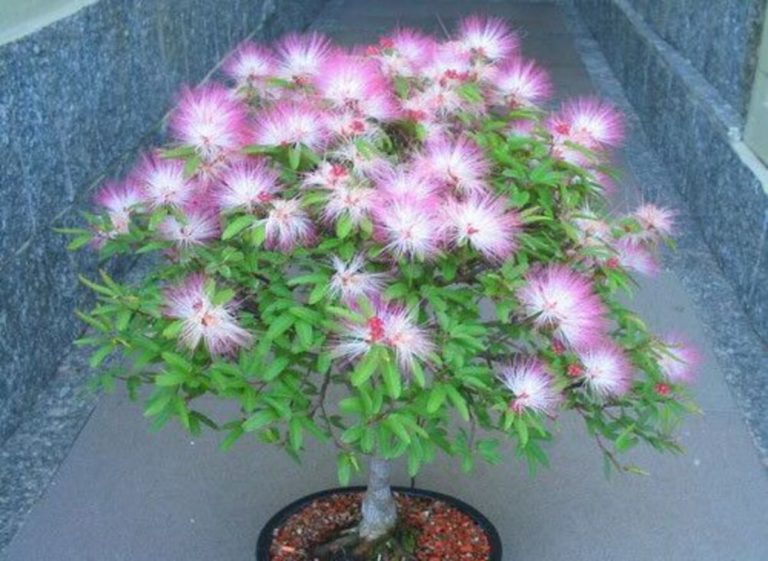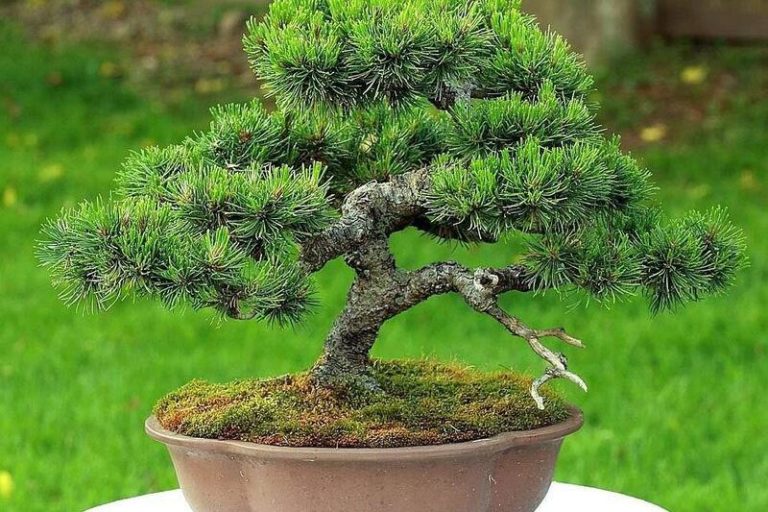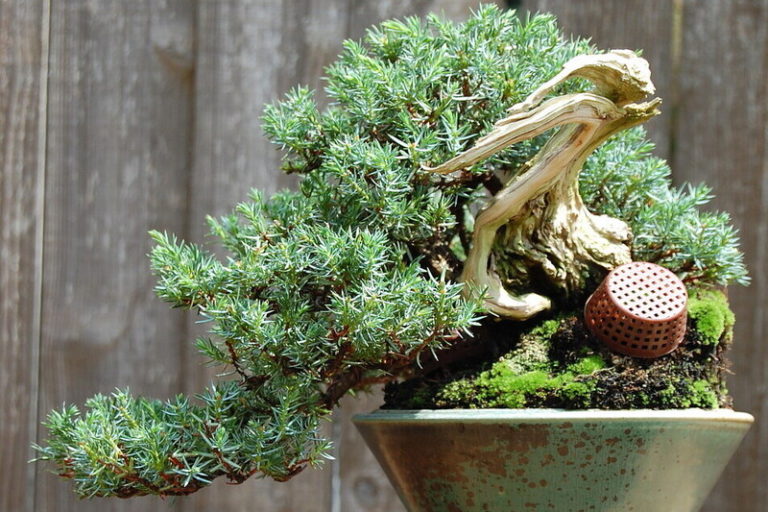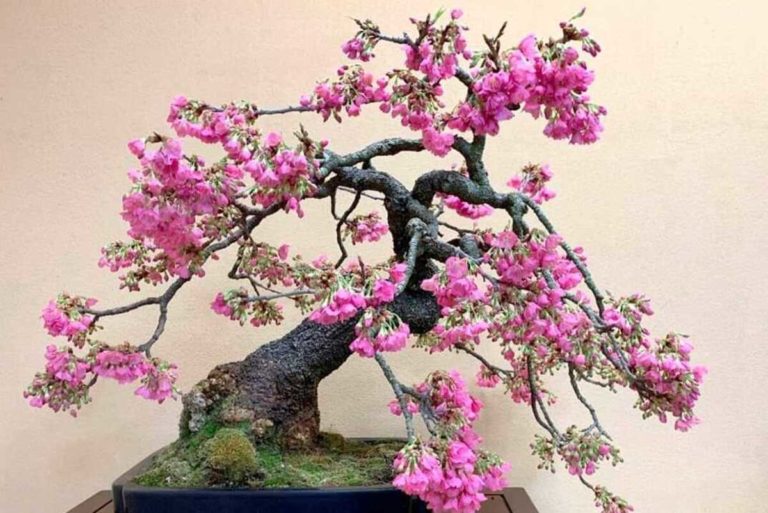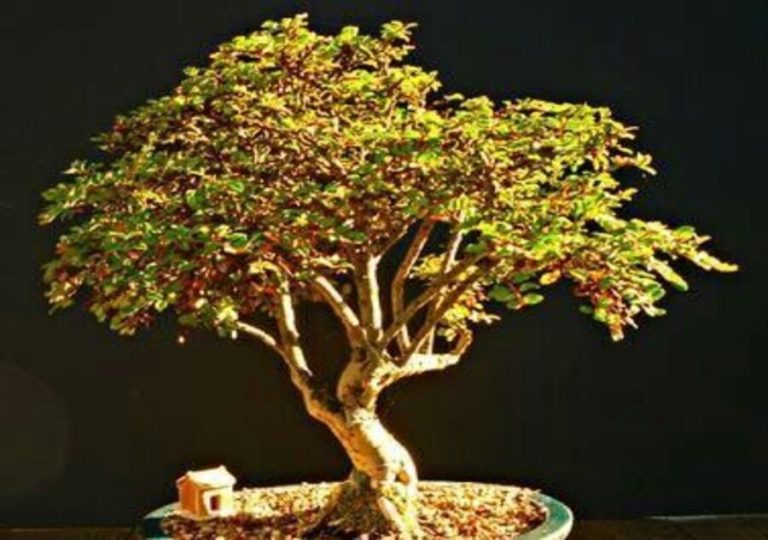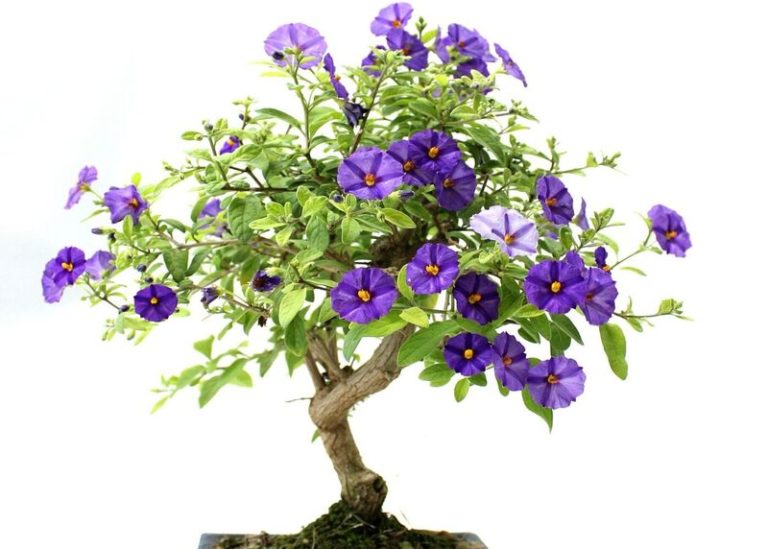Eastern Red Cedar Bonsai : A Living Sculpture for Your Home or Office
Bonsai trees are tiny tree replicas produced in small pots. They are frequently used for décor and may provide a one-of-a-kind touch to any environment. Eastern Red Cedar Bonsai is a form of bonsai that is quite easy to develop and care for. This post will go through how to choose, grow, prune, and care for Eastern Red Cedar Bonsai.
What is Eastern Red Cedar Bonsai?
Eastern Red Cedar Bonsai is a bonsai tree made from the Eastern Red Cedar, an evergreen tree native to North America. Bonsai trees are miniature copies of full-sized trees that are cultivated in small pots and taught to grow in a certain shape. Eastern Red Cedar Bonsai is a favorite option among bonsai lovers because it is simple to grow and maintain, and its appealing leaves and bark make it a lovely addition to any room. An Eastern Red Cedar Bonsai may live for many years with appropriate care and attention.
Types of Eastern Red Cedar Bonsai
Each variety of Eastern Red Cedar Bonsai has its own distinct characteristics. Here are some of the most prevalent varieties:
Columnar Eastern Red Cedar Bonsai – This type of bonsai tree has a tall, narrow shape that resembles a column. It is a popular choice for formal or minimalist styles.
Cascade Eastern Red Cedar Bonsai – The cascade style is when the branches of the bonsai tree fall downwards, giving it a cascading appearance. The Eastern Red Cedar is a great tree for this style because its branches are naturally flexible and can be easily trained.
Informal Upright Eastern Red Cedar Bonsai – This style is more natural and less formal. The tree grows upright but with a slight curve, giving it a more organic appearance.
Slanting Eastern Red Cedar Bonsai – The slanting style is when the trunk of the bonsai tree leans to one side, giving it a windswept appearance. The Eastern Red Cedar is a good choice for this style because it can withstand strong winds in its natural environment.
Semi-Cascade Eastern Red Cedar Bonsai – This style is similar to the cascade style, but the branches of the bonsai tree only partially cascade downwards. It creates a beautiful and balanced look.
Regardless of the design of Eastern Red Cedar Bonsai you choose, it is essential to maintain its health and attractiveness for years to come.

Eastern Red Cedar Bonsai and Its Symbolism
In Japanese culture, bonsai trees are often associated with symbolism and meaning. The Eastern Red Cedar Bonsai is no exception. Here are some common meanings and symbolism associated with this type of bonsai tree:
- Longevity – The Eastern Red Cedar is known for its long lifespan, and as such, an Eastern Red Cedar Bonsai can represent longevity and endurance.
- Protection – In some cultures, the Eastern Red Cedar tree is regarded as a protective tree, and a bonsai of this species can represent protection, safety, and security.
- Wisdom – Trees are often associated with wisdom and knowledge, and the Eastern Red Cedar is no exception. An Eastern Red Cedar Bonsai can represent wisdom and understanding.
- Strength – The Eastern Red Cedar tree is a hardy and resilient species, able to withstand harsh weather conditions and other challenges. An Eastern Red Cedar Bonsai can symbolize strength, resilience, and perseverance.
- Harmony – The art of bonsai is all about balance and harmony between the tree, the pot, and the environment. An Eastern Red Cedar Bonsai can represent harmony, balance, and unity.
In addition to these meanings, the beauty and elegance of an Eastern Red Cedar Bonsai can simply bring joy and tranquility to a space, making it a wonderful addition to any home or garden.
Characteristics of Eastern Red Cedar Bonsai
Eastern Red Cedar Bonsai is an attractive option for bonsai devotees due to its unique characteristics. Here are some of its primary attributes:
Evergreen Foliage – The evergreen needle-like foliage of the Eastern Red Cedar makes it an attractive option for bonsai because it retains its green hue throughout the year.
Attractive Bark – The Eastern Red Cedar has reddish-brown bark that exfoliates in thin strips, revealing a reddish-orange inner bark. The unique and attractive bark adds to the overall aesthetic appeal of the bonsai.
Hardy and Resilient – The Eastern Red Cedar is a tough and resilient tree that can withstand a variety of weather conditions and other obstacles. Beginner bonsai devotees should consider this tree as a result.
Flexibility – The branches of the Eastern Red Cedar are naturally flexible, making it easy to train and shape them into the desired bonsai form.
Tolerant of Pruning – The Eastern Red Cedar is tolerant of pruning, which is a key aspect of maintaining the shape and size of a bonsai tree. This allows bonsai enthusiasts to create and maintain the desired shape and form of the tree.
Aromatic – The Eastern Red Cedar has a distinctive aromatic scent, which can add to the overall sensory experience of having a bonsai tree in the home or garden.
Bonsai devotees can cultivate and maintain an attractive and healthy Eastern Red Cedar Bonsai by understanding and utilizing these characteristics.
How to Grow Eastern Red Cedar Bonsai
If you have the time, attention to detail, and proper care, cultivating an Eastern Red Cedar bonsai may be a rewarding and delightful experience. When caring for your Eastern Red Cedar Bonsai, remember to:
- Choose a Suitable Tree – Select a healthy Eastern Red Cedar tree with a straight trunk and well-distributed branches. Look for a tree with small needles and tight internodes, which will help create a compact bonsai tree.
- Prune the Tree – After selecting the tree, prune it to remove any unwanted branches and shape it into the desired bonsai form. This should be done during the tree’s dormant season in late winter or early spring.
- Repot the Tree – Repot the Eastern Red Cedar Bonsai in a soil mixture that provides for proper drainage and aeration. This should be done every two to three years to give the tree ample room to thrive.
- Water the Tree – Water Eastern Red Cedar Bonsai when the soil is dry to the touch, but be cautious not to overwater the tree. Overwatering can cause root rot, which is harmful to the tree.
- Provide Adequate Light – Eastern Red Cedar Bonsai requires full sun to partial shade to thrive. Make sure to place the tree in a location that receives adequate sunlight.
- Fertilize the Tree – Fertilize the Eastern Red Cedar Bonsai regularly with a balanced fertilizer during the growing season to promote healthy growth and development.
- Prune and Shape the Tree Regularly – Prune and shape the Eastern Red Cedar Bonsai regularly to maintain its desired shape and form.
By following these steps and providing proper care and attention, an Eastern Red Cedar Bonsai can thrive and provide years of enjoyment and beauty.
Benefit of Eastern Red Cedar Bonsai
In addition to their aesthetic appeal, Eastern Red Cedar Bonsai trees can offer several benefits to their owners. Here are some of the benefits of having an Eastern Red Cedar Bonsai:
Stress Relief – Spending time in nature has been demonstrated in studies to help decrease stress and increase relaxation. Caring for an Eastern Red Cedar Bonsai may be a contemplative and relaxing activity, reducing tension and anxiety.
Air Purification – Trees are natural air purifiers, and the Eastern Red Cedar is no exception. By having an Eastern Red Cedar Bonsai in the home, you can improve indoor air quality by removing pollutants and other harmful particles from the air.
Creativity and Mindfulness – Patience, attention to detail, and imagination are required while growing and caring for an Eastern Red Cedar Bonsai. This can assist to improve mental health and well-being by encouraging mindfulness and creativity.
Connection with Nature – Even in metropolitan areas where access to natural settings is limited, having an Eastern Red Cedar Bonsai in the house may create a sense of connection with nature.
Aesthetic Appeal – Eastern Red Cedar Bonsai trees are beautiful and elegant, adding to the aesthetic appeal of any home or garden.
Overall, growing and caring for an Eastern Red Cedar Bonsai can provide a range of benefits, from improving indoor air quality to promoting mindfulness and creativity.
Styling and Design of Eastern Red Cedar Bonsai
The styling and design of an Eastern Red Cedar Bonsai is an important aspect of creating a beautiful and healthy bonsai tree. Here are some tips for styling and designing an Eastern Red Cedar Bonsai:
- Choose a Design – The bonsai tree’s design should be based on its natural growth pattern and attributes. Because the Eastern Red Cedar Bonsai has a natural inclination to grow tall and thin, the design should account for this and strive for balance and proportion.
- Develop the Trunk – The trunk of the Eastern Red Cedar Bonsai should be thickened to create a sense of maturity and stability. This can be achieved through selective pruning and wiring to create curves and movement in the trunk.
- Create Branch Structure – The branch structure of the Eastern Red Cedar Bonsai should be well-distributed and balanced to create a sense of harmony and proportion. This can be achieved through selective pruning and wiring to create a natural-looking branch structure.
- Shape the Foliage – The foliage of the Eastern Red Cedar Bonsai should be shaped to create a balanced and proportional canopy. This can be achieved through selective pruning and wiring to create a compact and balanced foliage structure.
- Choose a Pot – The pot for the Eastern Red Cedar Bonsai should be selected based on the tree’s size and style. The pot should be appropriate for the tree’s size and form, as well as match its overall appearance.
- Maintain the Design – Once the design of the Eastern Red Cedar Bonsai has been set, it should be maintained by trimming, wiring, and repotting on a regular basis to ensure its continuing health and beauty.
Bonsai lovers may develop a beautiful and healthy Eastern Red Cedar Bonsai that is well-suited to their home or yard by following these guidelines.
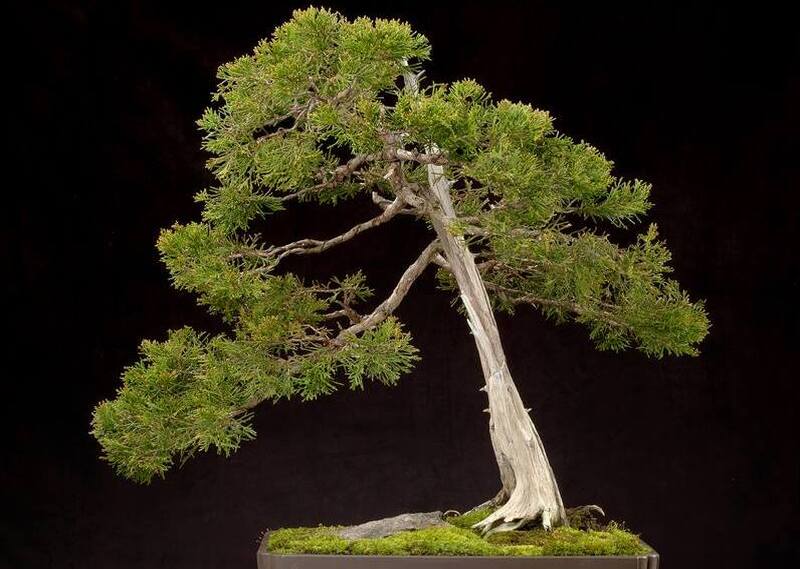
How to Care and Maintain Eastern Red Cedar Bonsai?
To maintain an Eastern Red Cedar Bonsai healthy and beautiful, care for it involves attention to detail and frequent maintenance. Here are some pointers on how to care for and maintain an Eastern Red Cedar Bonsai:
Watering – Red Eastern Cedar Bonsai plants like dirt that is just a little bit damp. Water the tree when the dirt starts to get dry, but don’t water it too much or the roots could die. How often you water a tree will depend on where it is, what time of year it is, and how big it is.
Soil – The Eastern Red Cedar Bonsai needs a soil that drains well and has a lot of nutrients. A combination of peat moss, perlite, and vermiculite can keep water in and let it drain out well.
Fertilization – Fertilize the Eastern Red Cedar Bonsai using a balanced fertilizer during the growing season to encourage healthy development. Overfertilization can cause leaf burn and other problems.
Pruning – Regularly prune the Eastern Red Cedar Bonsai to preserve its shape and health. Remove any branches that are deceased, diseased, or damaged, as well as any that are growing in the incorrect direction. Before new growth emerges, pruning must be performed in late winter or early spring.
Wiring – Wiring can be used to shape and train the branches of the Eastern Red Cedar Bonsai. Use gentle, flexible wire to avoid damaging the branches, and remove the wire once the branch has set in its new position.
Sunlight – Eastern Red Cedar Bonsai trees prefer full sun to partial shade. Place the tree in a location where it can receive plenty of sunlight throughout the day.
Pests and Diseases – Watch for signs of pests and diseases, such as discoloration or wilting of leaves. Common pests include spider mites and aphids, while common diseases include cedar rust and root rot. Treat any issues promptly to avoid spreading to the rest of the tree.
By following these tips, bonsai enthusiasts can keep their Eastern Red Cedar Bonsai healthy and beautiful for years to come. Regular care and maintenance will ensure that the tree remains a stunning addition to any home or garden.
Eastern Red Cedar Bonsai Care Sheet
| Aspect | Care Tips |
| Watering | Water when the soil begins to dry out, but avoid over-watering. |
| Soil | Use well-draining, nutrient-rich soil such as a mixture of peat moss, perlite, and vermiculite. |
| Fertilization | Fertilize with a balanced fertilizer during the growing season, but avoid over-fertilizing. |
| Pruning | Remove dead and damaged branches and prune frequently. Late winter/early spring pruning. |
| Wiring | After shaping and training branches, remove the wire. |
| Sunlight | Place the tree in a location where it can receive full sun to partial shade. |
| Pests and Diseases | Pests and diseases cause leaf discolouration and withering. Spider mites, aphids, cedar rust, and root rot are frequent pests and illnesses. Fix problems immediately. |
By following these care tips, bonsai enthusiasts can keep their Eastern Red Cedar Bonsai healthy and beautiful for years to come.
Conclusion:
Bonsai made from Eastern Red Cedar is a stunning addition to any room. With time and effort, you may cultivate a bonsai tree into a thriving miniature forest that will last for decades. Keep a watch out for pests and illness, choose a healthy tree, make sure it has enough water, fertilizer, and sunlight, repot it every few years, and remember to trim and wire it as needed.
FAQ:
Q: What is the best time to prune my Eastern Red Cedar Bonsai?
A: Late winter or early spring is the best time to prune your Eastern Red Cedar Bonsai, before new growth begins.
Q: Can I grow an Eastern Red Cedar Bonsai indoors?
A: Eastern Red Cedar Bonsai thrive outdoors, but can be grown indoors with adequate light and humidity.
Q: How often should I water my Eastern Red Cedar Bonsai?
A: Water your Eastern Red Cedar Bonsai when the soil begins to dry out, but avoid over-watering.
Q: How much sunlight does my Eastern Red Cedar Bonsai need?
A: Eastern Red Cedar Bonsai prefer full sun to partial shade.
Q: How do I prevent pests and diseases from affecting my Eastern Red Cedar Bonsai?
A: Regularly inspect your bonsai for signs of pests and diseases, and treat promptly if detected. Proper care, including watering, fertilization, and pruning, can also help prevent pests and diseases.
Q: Can I use regular potting soil for my Eastern Red Cedar Bonsai?
A: No, regular potting soil is not suitable for Eastern Red Cedar Bonsai. Use well-draining, nutrient-rich soil such as a mixture of peat moss, perlite, and vermiculite.
Q: How long does it take for an Eastern Red Cedar Bonsai to mature?
A: Depending on its initial dimensions and the level of care it receives, it can take several years for an Eastern Red Cedar bonsai to mature.
Q: Can I wire my Eastern Red Cedar Bonsai to shape it?
A: Yes, you can shape and train the branches on your Eastern Red Cedar Bonsai with soft, flexible wire. Just make sure to take the wire off once the branch is in the right place.
Also Read:


